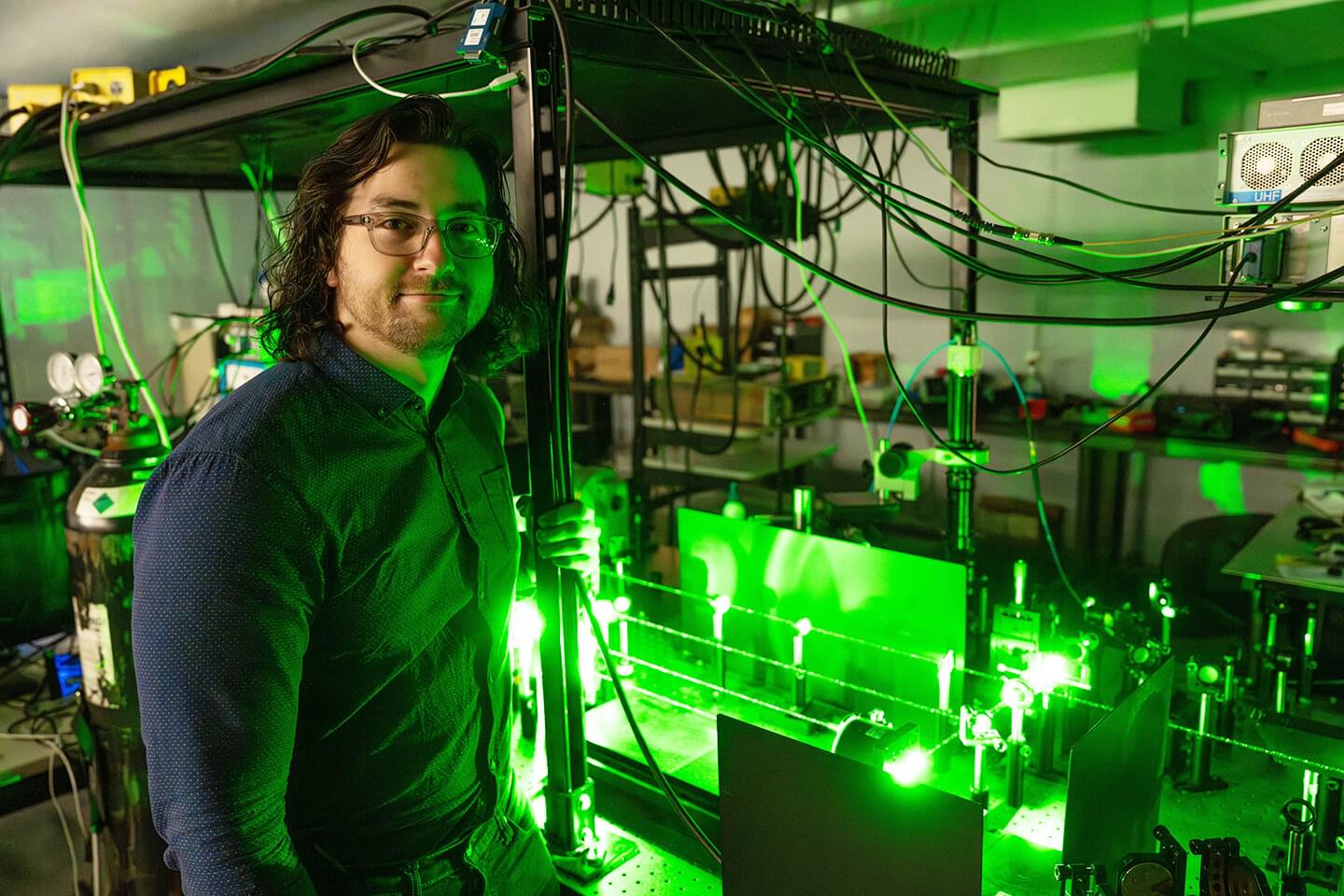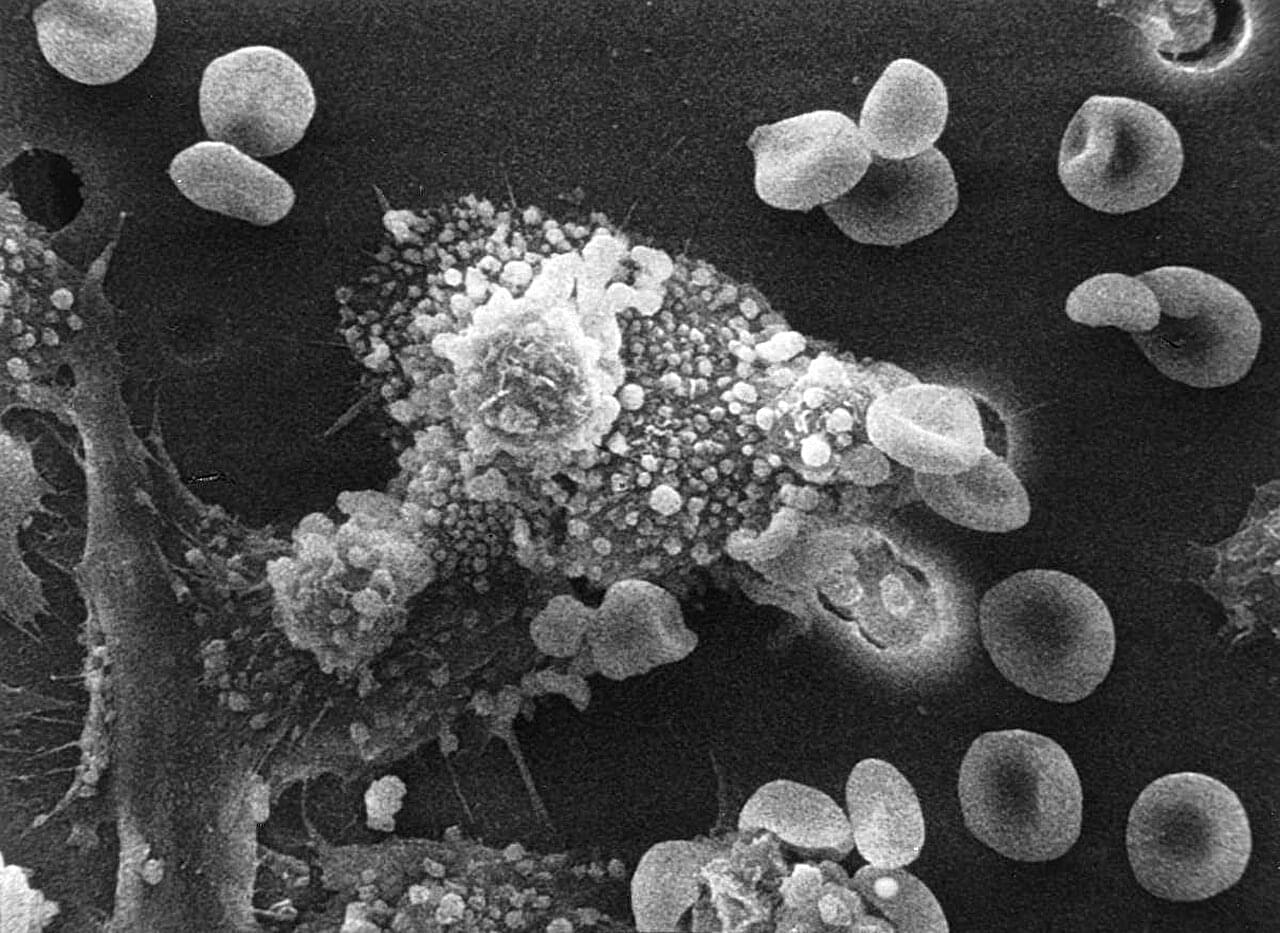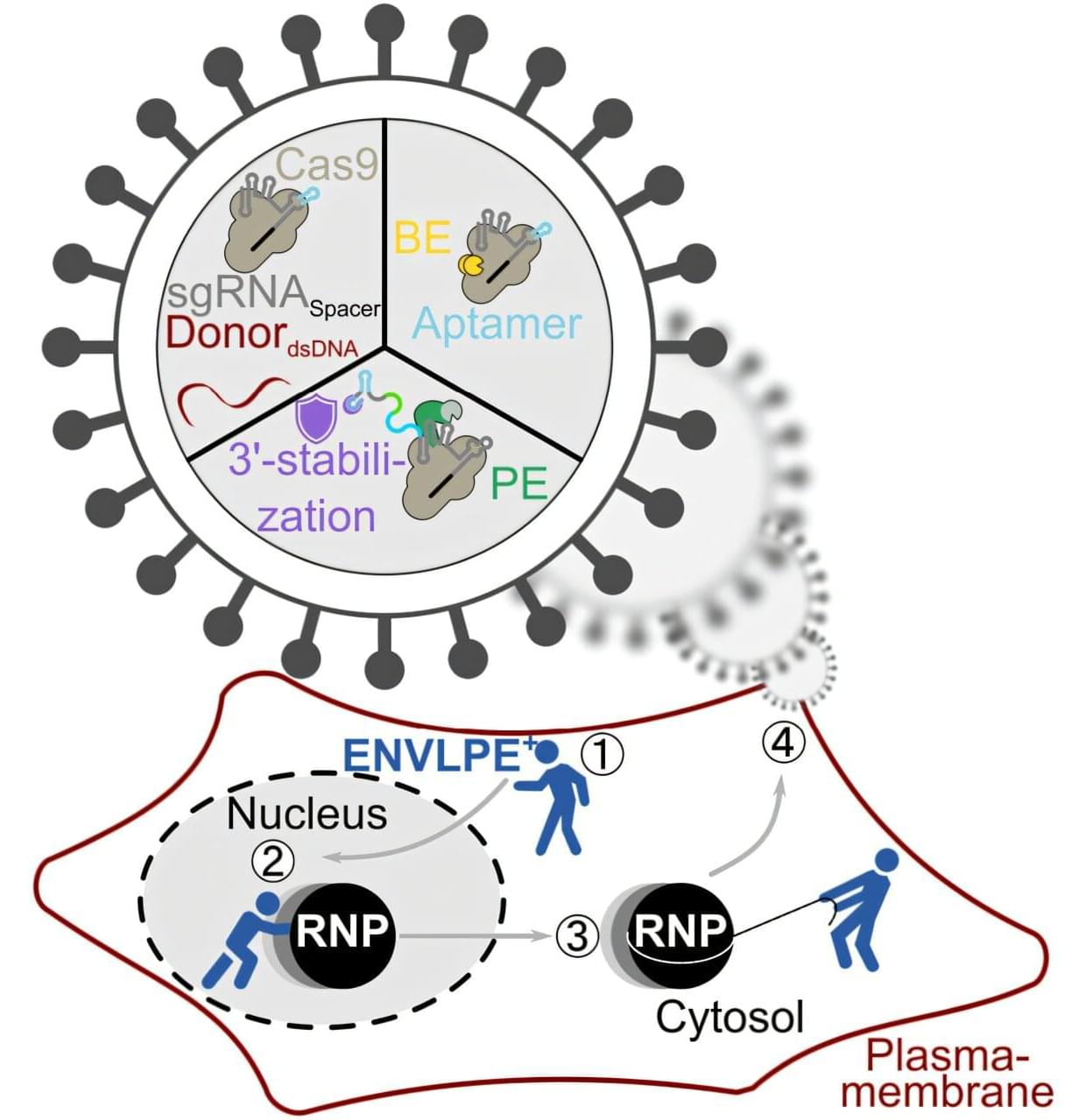Amplifying or silencing genes may be preferable to permanently changing genetic code



A multidisciplinary clinical team led by Professor Bernat Soria from the Institute of Bioengineering at the Miguel Hernández University of Elche (UMH, Spain) has developed a new method to deliver cell therapies in patients on extracorporeal membrane oxygenation (ECMO), a life support system used in cases of severe lung failure.
The advance has been published in Stem Cell Research & Therapy. The team has opted not to patent the technique in order to encourage its use in public health systems once further clinical testing is completed.
The method—named CIBA, for “Consecutive Intrabronchial Administration”—enables the delivery of stem-cell-based treatments directly into the alveoli of critically ill patients who cannot receive standard intravenous cell therapy due to the ECMO system’s constraints.
In a breakthrough with promising real-world applications, a team of Rutgers biophysicists, bioengineers, and plant biologists has captured the first live images.
In a groundbreaking study, researchers at Rutgers University-New Brunswick have captured continuous, 24-hour images of cellulose synthesis, the process by which plant cell walls are built, using living plant cells. This marks the first time the dynamic process of cell-wall construction has been observed in real time, offering critical insights that could lead to the development of more resilient crops, enhanced food production, and lower-cost biofuels.
Published in the journal Science Advances.
*This video was recorded at Foresight’s Vision Weekend 2025 in Puerto Rico*
https://foresight.org/vw2025pr/
Our Vision Weekends are the annual festivals of Foresight Institute. Held in two countries, over two weekends, you are invited to burst your tech silos and plan for flourishing long-term futures. This playlist captures the magic of our Puerto Rico edition, held February 21–23, 2025, in the heart of Old San Juan. Come for the ideas: join the conference, unconference, mentorship hours, curated 1-1s, tech demos, biohacking sessions, prize awards, and much more. Stay for fun with new friends: join the satellite gatherings, solarpunk future salsa night, beach picnic, and surprise island adventures. This year’s main conference track is dedicated to “Paths to Progress”; meaning you will hear 20+ invited presentations from Foresight’s core community highlighting paths to progress in the following areas: Existential Hope Futures, Longevity, Rejuvenation, Cryonics, Neurotech, BCIs & WBEs, Cryptography, Security & AI, Fusion, Energy, Space, and Funding, Innovation, Progress.
══════════════════════════════════════
*About The Foresight Institute*
The Foresight Institute is a research organization and non-profit that supports the beneficial development of high-impact technologies. Since our founding in 1986 on a vision of guiding powerful technologies, we have continued to evolve into a many-armed organization that focuses on several fields of science and technology that are too ambitious for legacy institutions to support. From molecular nanotechnology, to brain-computer interfaces, space exploration, cryptocommerce, and AI, Foresight gathers leading minds to advance research and accelerate progress toward flourishing futures.
*We are entirely funded by your donations. If you enjoy what we do please consider donating through our donation page:* https://foresight.org/donate/
*Visit* https://foresight.org, *subscribe to our channel for more videos or join us here:*
*This video was recorded at Foresight’s Vision Weekend 2025 in Puerto Rico*
https://foresight.org/vw2025pr/
Our Vision Weekends are the annual festivals of Foresight Institute. Held in two countries, over two weekends, you are invited to burst your tech silos and plan for flourishing long-term futures. This playlist captures the magic of our Puerto Rico edition, held February 21–23, 2025, in the heart of Old San Juan. Come for the ideas: join the conference, unconference, mentorship hours, curated 1-1s, tech demos, biohacking sessions, prize awards, and much more. Stay for fun with new friends: join the satellite gatherings, solarpunk future salsa night, beach picnic, and surprise island adventures. This year’s main conference track is dedicated to “Paths to Progress”; meaning you will hear 20+ invited presentations from Foresight’s core community highlighting paths to progress in the following areas: Existential Hope Futures, Longevity, Rejuvenation, Cryonics, Neurotech, BCIs & WBEs, Cryptography, Security & AI, Fusion, Energy, Space, and Funding, Innovation, Progress.
══════════════════════════════════════
*About The Foresight Institute*
The Foresight Institute is a research organization and non-profit that supports the beneficial development of high-impact technologies. Since our founding in 1986 on a vision of guiding powerful technologies, we have continued to evolve into a many-armed organization that focuses on several fields of science and technology that are too ambitious for legacy institutions to support. From molecular nanotechnology, to brain-computer interfaces, space exploration, cryptocommerce, and AI, Foresight gathers leading minds to advance research and accelerate progress toward flourishing futures.
*We are entirely funded by your donations. If you enjoy what we do please consider donating through our donation page:* https://foresight.org/donate/
*Visit* https://foresight.org, *subscribe to our channel for more videos or join us here:*
*This video was recorded at Foresight’s Vision Weekend 2025 in Puerto Rico*
https://foresight.org/vw2025pr/
Our Vision Weekends are the annual festivals of Foresight Institute. Held in two countries, over two weekends, you are invited to burst your tech silos and plan for flourishing long-term futures. This playlist captures the magic of our Puerto Rico edition, held February 21–23, 2025, in the heart of Old San Juan. Come for the ideas: join the conference, unconference, mentorship hours, curated 1-1s, tech demos, biohacking sessions, prize awards, and much more. Stay for fun with new friends: join the satellite gatherings, solarpunk future salsa night, beach picnic, and surprise island adventures. This year’s main conference track is dedicated to “Paths to Progress”; meaning you will hear 20+ invited presentations from Foresight’s core community highlighting paths to progress in the following areas: Existential Hope Futures, Longevity, Rejuvenation, Cryonics, Neurotech, BCIs & WBEs, Cryptography, Security & AI, Fusion, Energy, Space, and Funding, Innovation, Progress.
══════════════════════════════════════
*About The Foresight Institute*
The Foresight Institute is a research organization and non-profit that supports the beneficial development of high-impact technologies. Since our founding in 1986 on a vision of guiding powerful technologies, we have continued to evolve into a many-armed organization that focuses on several fields of science and technology that are too ambitious for legacy institutions to support. From molecular nanotechnology, to brain-computer interfaces, space exploration, cryptocommerce, and AI, Foresight gathers leading minds to advance research and accelerate progress toward flourishing futures.
*We are entirely funded by your donations. If you enjoy what we do please consider donating through our donation page:* https://foresight.org/donate/
*Visit* https://foresight.org, *subscribe to our channel for more videos or join us here:*

Imagine if phones never got hot no matter how many apps were running. Picture a future where supercomputers use less energy, electric cars charge faster, and life-saving medical devices stay cooler and last longer.
In a study published in Nature Materials, a team of engineers at the University of Virginia and their collaborators revealed a radical new way to move heat, faster than ever before. Using a special kind of crystal called hexagonal boron nitride (hBN), they found a way to move heat like a beam of light, sidestepping the usual bottlenecks that make electronics overheat.
“We’re rethinking how we handle heat,” said Patrick Hopkins, professor of mechanical and aerospace engineering and Whitney Stone Professor of Engineering at UVA. “Instead of letting it slowly trickle away, we’re directing it.”

To grow, cancer tumors must hijack the immune system for their needs. One of the main tricks that most tumors use is to manipulate a type of immune cell called a macrophage, causing it to protect the tumor from the rest of the immune system, recruit blood vessels and help the cancer spread to other tissues.
Now researchers in Prof. Ido Amit’s lab at the Weizmann Institute of Science have used state-of-the-art gene editing and single-cell and AI technologies to identify a master switch that turns macrophages into cancer helpers.
Based on this discovery, the team developed a new therapy that was shown to be effective in mice with bladder tumors, one of the most common types of cancer in humans and one for which only limited therapeutic innovations are currently available. The discovery is presented in a paper published in the journal Cancer Cell.

17K likes, — vaibhavsisinty on March 27, 2025: “Your Future Kids Might Be Genetically Engineered🤯… [genetic engineering, CRISPR, designer babies, IVF, in vitro gametogenesis, gene editing, human evolution, bioethics, futuristic science, AI in healthcare, medical advancements, artificial reproduction, skin cell gametes, future tech, DNA modification, biotechnology]”

A research team from Helmholtz Munich and the Technical University of Munich has developed an advanced delivery system that transports gene-editing tools based on the CRISPR/Cas9 gene-editing system into living cells with significantly greater efficiency than before. Their technology, ENVLPE, uses engineered non-infectious virus-like particles to precisely correct defective genes—demonstrated successfully in living mouse models that are blind due to a mutation.
This system also holds promise for advancing cancer therapy by enabling precise genetic manipulation of engineered immune cells, making them more universally compatible and thus more accessible for a larger group of cancer patients.
The work is published in the journal Cell.